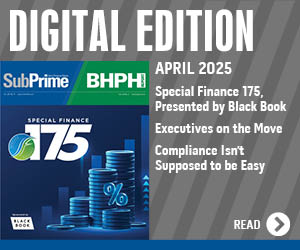Average new-car APRs drop to levels not seen since 2013; used stays nearly steady

Edmunds discovered interest rates for new vehicles financed in May dropped to the lowest level seen by the industry in nearly seven years.
Meanwhile, Edmunds indicated that rates for used-vehicle financing remain nearly steady compared to both this time last year as well as five years ago.
Edmunds reported on Tuesday that the annual percentage rate (APR) on new financed vehicles averaged 4% in May, compared to 4.3% in April and 6.1% a year ago. Analysts said this reading is the lowest average interest rate since August 2013 and the third-lowest Edmunds has on record dating back to 2002.
On the used-vehicle side, Edmunds determined that ARP came in at 8.3% in May, slightly lower than the year-ago reading (8.7%) and a bit above what analysts spotted back in May 2015 (7.6%).
Edmunds analysts also mentioned that zero-percent finance offers for new models dipped slightly in May compared to April, but still remained at near-record levels. The firm said these deals constituted 24% of all new financed purchases, compared to 25.8% last month.
Furthermore, Edmunds data also revealed that 47% of all financed purchases received an APR below 3% in May, compared to 41.5% in April.
“Consumers who purchased a car in May got to take advantage of some of the best deals we’ve ever seen, thanks to a combination of Memorial Day weekend sales and generous incentives offered by automakers to spur demand during the pandemic,” Edmunds executive director of insights Jessica Caldwell said in a news release. “Even with 0% finance deals down slightly, more car shoppers got better financing rates than usual.”
Edmunds went on to note that contract term lengths sustained near-record highs in May. The average term length for a new vehicle was 71.4 months, which is the second-highest Edmunds has on record, compared to last month’s average of 73.4 months.
“Car shoppers are showing that they’re comfortable committing to longer loans to get the vehicles that they want right now, especially with the ongoing availability of 0% deals,” Caldwell said. “But these incentives aren’t going to last forever. It’s going to get tougher for car shoppers to find good deals as inventory declines over the new few months.”
Likely sparking the stretching of those new-vehicle terms is the cost of those models.
ALG, a subsidiary of TrueCar, projected average transaction prices (ATP) in May to be up 4.6% or $1,607 from a year ago but down 1.7% or $639 from April.
“Every brand, with the exception of Kia, has increased their average transaction price year-over-year in May mainly attributed to ongoing 0% interest rates. Kia is down likely due to lower inventory levels on their popular Telluride model, which carries one of the highest MSRPs in their lineup,” ALG chief industry analyst Eric Lyman said in a news release.
“It’s important to note that while average transaction prices have increased year-over-year, they are down month-over-month,” Lyman continued. “We can expect a trend of lower inventory on popular models across automakers as production stoppages and higher than expected demand are taking shape based on geography. As a result, we expect automakers to continue to not only pull back, but also shift their incentive strategies from nationally based to regionally and locally based in order to offset those supply shortages.
“We expect the highly incentivized and in-demand SUVs and trucks to be affected more than other segments,” he added.
And finally, the valuation analysts at Kelley Blue Book reported the estimated average transaction price for a light vehicle in the United States came in at $38,940 in May. KBB computed new-vehicle prices increased $1,618 (up 4.3%) year-over-year, while prices dropped $244 (down 0.6%) from last month.
“Though new-car sales will be down significantly for the third month in a row, due to the COVID-19 pandemic, average transaction prices have actually strengthened over this period for several reasons,” Kelley Blue Book analyst Tim Fleming said in a news release. “Incentives, deferred payments, and low APR deals are helping consumers stretch out their monthly payments over longer terms.
“Inventory levels have tightened as the economic recovery has begun, but little new supply has arrived yet from the factories that restarted in May,” Fleming continued. “Finally, the share of pickup trucks has spiked recently, reaching an all-time high in April.”
KBB reiterated these factors all contributed to the 4% increase in transaction prices in. However, KBB predicted gains at these levels are not sustainable.
“If factories are slow to restart and new-vehicle inventories remain low, manufacturers will pare back their incentives, placing pressure on new-vehicle prices,” KBB said. “While trucks have been remarkably resilient, their big spike in market share was the result of sales losses in mid-size cars, compact SUVs and minivans.
“When the market sees sales of these family haulers return will depend on the shape of the economic recovery, but in the meantime, truck manufacturers are likely pushing to get capacity back up quickly to restock their inventories,” KBB went on to say.
|
|
May 2020 |
May 2019 |
May 2015 |
|
Term |
71.4 |
69.6 |
67.9 |
|
Monthly Payment |
$570 |
$559 |
$490 |
|
Amount Financed |
$36,059 |
$32,510 |
$28,908 |
|
APR |
4.0% |
6.1% |
4.6% |
|
Down Payment |
$3,925 |
$4,235 |
$3,346 |
|
|
May 2020 |
May 2019 |
May 2015 |
|
Term |
67.9 |
67.3 |
66.1 |
|
Monthly Payment |
$412 |
$412 |
$381 |
|
Amount Financed |
$22,721 |
$22,191 |
$20,782 |
|
APR |
8.3% |
8.7% |
7.6% |
|
Down Payment |
$2,947 |
$2,719 |
$2,331 |
Source: Edmunds


